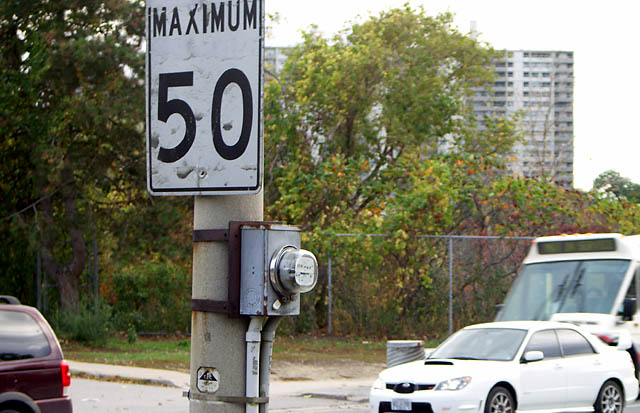In the past, I’ve always put my bike away for the season at the first snowfall and brought it out again when the streets and paths are clear of snow in March or April. It’s not that I couldn’t ride in the winter, it’s that I didn’t want to expose my bike to the destructive power of road salt. Plus, my rear brake or derailleur cable always seems to snap around mid-December, requiring about two months to replace it. Or so I always told myself. It seems that the first snowfall has always provided a good excuse to put the bike on the repair stand where I could visit it every couple of weeks to make all those little adjustments and repairs that I’d been putting off all year long.
But a couple of things have changed this year. First and foremost, I finally have a beater that I can sacrifice to the slush and ice without crying too much in the spring. Second, this is my first year commuting by bike. It’s easy enough to put the bike away for a couple of months when you’re a recreational rider and can spend the winter hiking or snowshoeing instead, but it’s a whole other level of hurt when putting the bike away means standing on a crowded bus twice a day with 75 of your smelliest, grumpiest acquaintances.
So as the snow started falling a month ahead of schedule a couple of weeks ago, I’ve tried to keep riding as much as possible. We haven’t had a real dumping yet, so it’s been a gradual introduction to riding in conditions that I’d normally avoid. I’ve made a few observations that won’t be news to anyone who normally commutes in the winter:
- I need more lights and reflectors for the ride home. There’s just something about riding in poor weather that makes me want to be lit up like a Christmas tree. I usually have blinking lights front and back, reflective tape on my forks, one of those ubiquitous MEC cycling jackets, and an ankle strap. In the last couple of weeks, I’ve added a helmet light and extra reflectors. Starting tomorrow, I’ll be replacing my regular rear blinker with my oversized and much brighter rear blinker. In the next few days, I’ll be adding a bigger and brighter front light, some additional reflective tape on my pannier, and may get one of those reflective vests for good measure. Call me paranoid, but I’ve been less certain than usual that drivers actually notice me. It’s not just about riding at night, which I do all year long. What I really want is a helicopter following me all the way home with a 30-million candlepower searchlight trained on me.
- For the most part, car and truck drivers give me more room. Granted, I don’t commute downtown or through the worst of high-speed suburbia, but I’ve noticed a huge difference in the patience of drivers. More of them seem to be more willing to wait behind me for a few seconds while I take the lane to get around a spot of ice or snow, and when they do pass, they’re more likely to move into the next lane entirely rather than try to squeeze past. We’ll see if this courtesy lasts into the new year.
- Bike lanes are disasters. It’s almost like crews go out of their way not to plough them. On any other street, the ploughs get to within a few inches of the curb, but if there’s a bike lane, they’ll only go so far as exposing the solid white line, teasing you with what could have been. Given what I’ve heard from others, the city is completely unresponsive on this matter, coming up with excuse after excuse why bike lanes simply can’t be cleared. Yeah, and it would be impossible to announce stops on buses, too. I’m quite certain that I wouldn’t get any help on the matter from my councillor.
- I will never, ever again throw snow onto the street when I’m clearing it from the sidewalk. I’ve always tried to avoid doing that anyway, but after riding through a few snow plumes from people’s driveways, it’s much clearer just how much of a hazard it is. I hereby apologize to any cyclists I’ve endangered in the past. It won’t happen again.
- I’m still sitting on the fence about using studded tires. There have been days when I really would have appreciated the extra grip, but I’m not sure if it’s worth riding around on them the rest of the time.
- Some coworkers think I’m off my rocker for riding in this weather. I think it just adds to my aura of mystery and intrigue in the office.
Overall, I’d say that riding in typical Toronto winter conditions really isn’t that difficult or daunting. The roads are generally clear a few hours after a snowfall. Unfortunately, the same certainly can’t be said of any bike lanes along the way. I had to take a couple of days off the bike this past week for reasons not related to the weather, but plan to be back on the saddle come Monday morning.
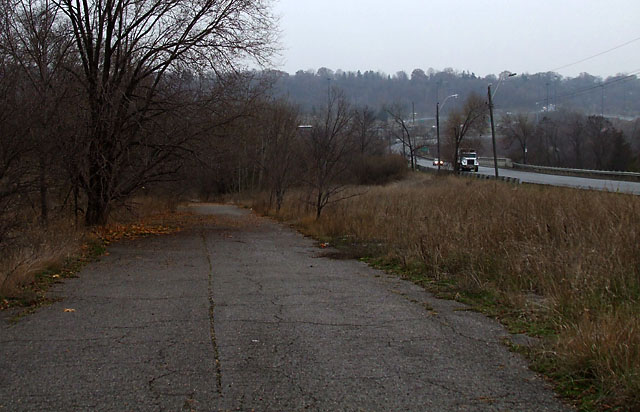
 Directly south of here is the single-lane
Directly south of here is the single-lane 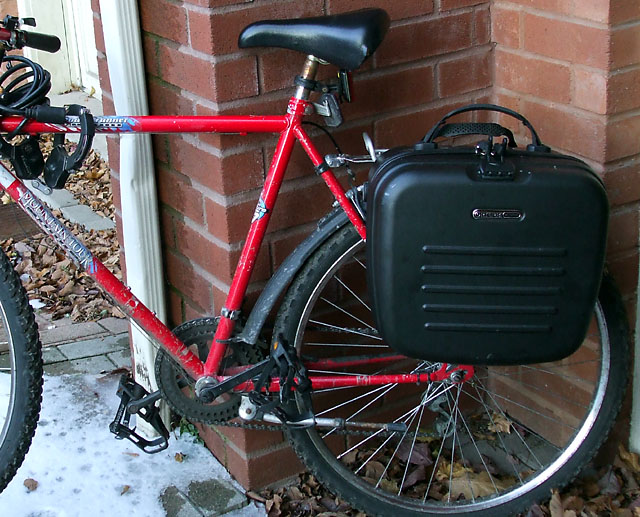
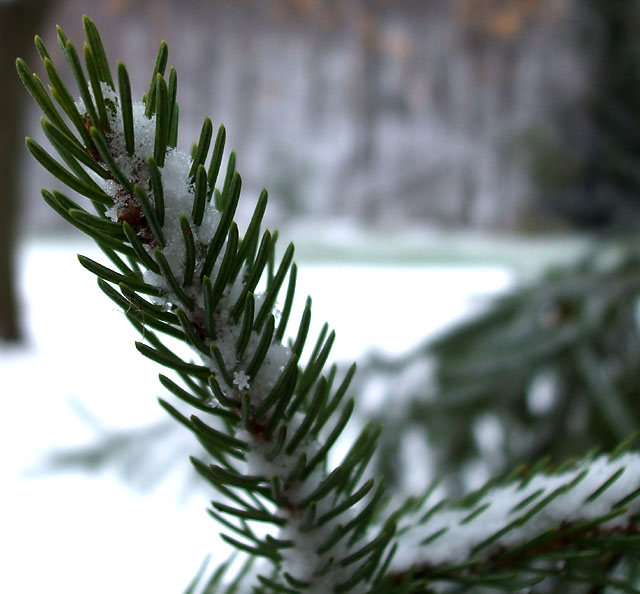
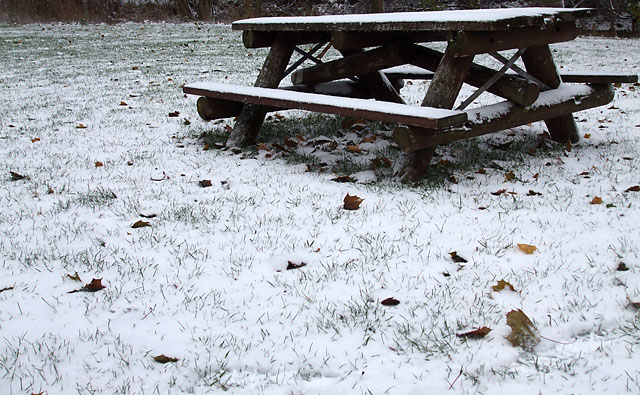
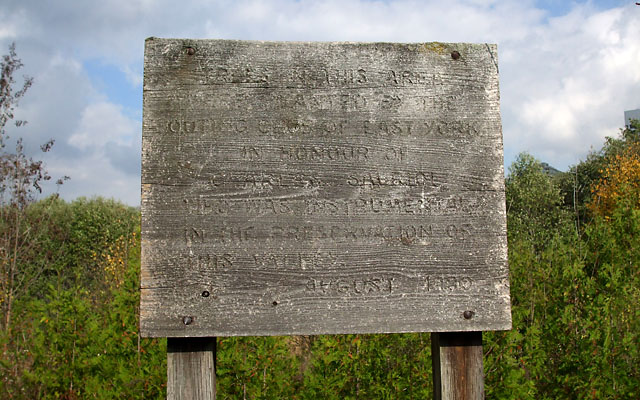
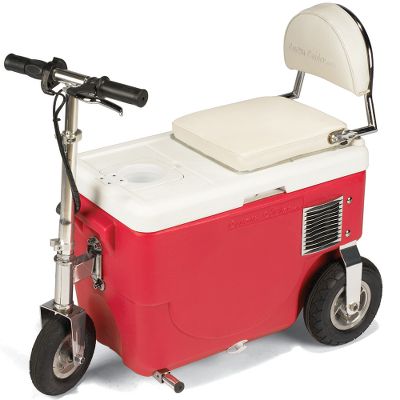 I can’t decide whether
I can’t decide whether 